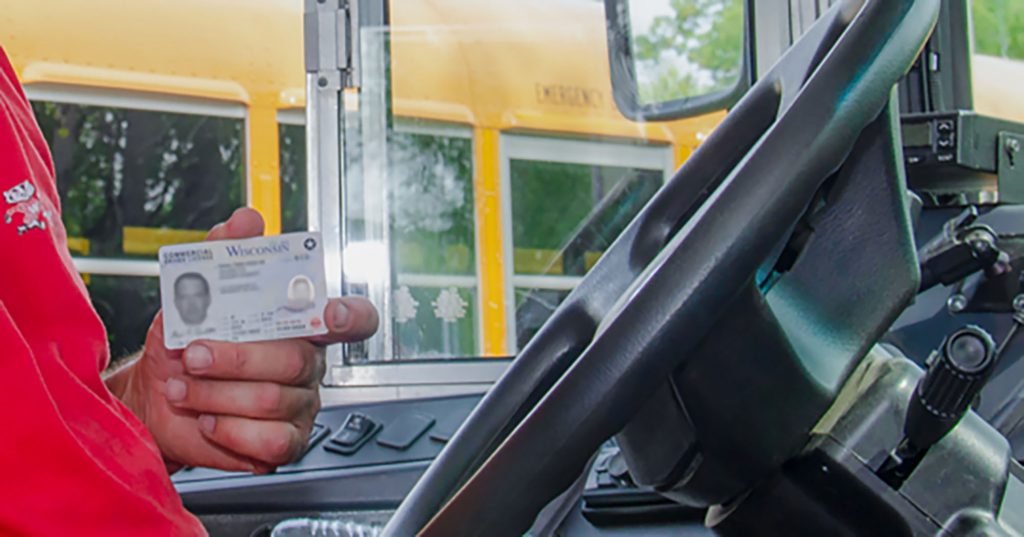Wisconsin Lost 18% of School Bus Drivers in Last 15 Years
And many drivers are 65 or older, new report finds.
State data shows there are nearly 18 percent fewer school bus drivers in Wisconsin than there were 15 years ago. Experts say the growing shortage will likely get worse, thanks to an aging workforce.
A report from the Wisconsin Policy Forum looked at data from the state Division of Motor Vehicles on people with commercial drivers licenses, or CDLs, who have an “S” endorsement for driving school buses.
Only drivers with S endorsements are allowed to operate school buses in Wisconsin. But Byrnes said it’s likely that some of the people with the endorsement aren’t using it to drive students.
“Either they still have the licenses and they’ve retired, or they’ve picked a different vehicle to drive,” he said. “If somebody can stop driving a school bus and start driving a delivery truck and make more money or have better hours, you might understand why they might make that choice.”
Cherie Hime, executive director of the Wisconsin School Bus Association, said the COVID-19 pandemic had a significant impact on these numbers.
“People were leaving for other CDL jobs that were available and driving while schools were closed,” she said. “They didn’t want to wait to start driving again. They needed income at that time, so they needed to keep moving.”
Hime said the industry is still feeling the impact. They’re focused on encouraging drivers to come back, while also working to attract new people to the profession.
Statewide school enrollment has been on the decline for years. But Byrnes said the number of drivers has fallen much faster. There were more than 68 students per licensed bus driver in 2022, which is almost 10 more kids per driver compared to 2007.
Even if enrollment declines continue, Byrnes said that doesn’t mean districts will need fewer drivers. He said students will still be spread out around school districts, leading to similar routes for fewer children.
“We thought, ‘Sure, school bus driving is a great retirement job. That’s probably always been the case,’” he said. “But we looked at school bus drivers in 2007, and they were, on average, three years younger.”
He said that means the shortage will likely get worse in the coming years as more current drivers decide to retire.
To Hime, seeing the average age of drivers increase isn’t entirely a bad sign. She said it shows some drivers have remained with the profession despite the industry’s challenges. And Hime said bus companies are turning to new groups of people, like the moms of school-age children, as a younger generation that can help fill these jobs in coming years.
Report: Wisconsin has lost nearly 18 percent of school bus drivers in last 2 decades was originally published by Wisconsin Public Radio.
If you think stories like this are important, become a member of Urban Milwaukee and help support real, independent journalism. Plus you get some cool added benefits.
Transportation
-
Congestion Pricing Cuts Air Pollution in New York City
 Dec 14th, 2025 by Jeff Wood
Dec 14th, 2025 by Jeff Wood
-
FTA Tells Milwaukee to Crack Down on Fare Evasion — Even Where Fares Don’t Exist
 Dec 12th, 2025 by Graham Kilmer
Dec 12th, 2025 by Graham Kilmer
-
Will GOGO’s Bus Service Ever Get Going?
 Dec 9th, 2025 by Jeramey Jannene
Dec 9th, 2025 by Jeramey Jannene
























School buses going down congested residential city streets must be shear hell. In my neighborhood…the concept of individual pick ups in front of your house has got to be reconsidered. Why the kids, especially the older ones, cannot walk to the corner for a combined pick up baffles me. For those that want to say it is a safety issue…you dismiss the fact that those who live within walking distance will still walk to those corners (and cross the streets to get there), Improper parking…illegal parking…and narrow passages scare me in a car, let alone for a driver in a 20-35 foot vehicle. I sure as “H” would not want to maneuver in one, and then have to put up with the reckless driving on Milwaukee (and suburban) streets. And the disrespect that drivers of a school bus get would never be a choice for a job like this.